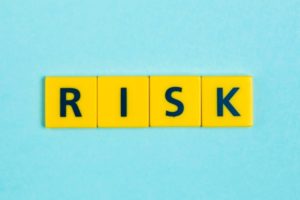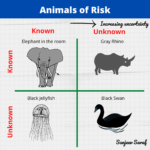Workplace Safety training is a big industry…every year companies are spending millions of dollars on training their employees.
I have always doubted the efficacy of repetitive and boring training sessions whether personal or virtual (Will your Refresher Training Work?). What is more surprising is that organizations are increasing their training budget without evaluating efficacy of their training program.
NIOSH recently released a report regarding Occupational Health and Safety (OHS) training supporting this view (A Systematic Review of the Effectiveness of Training & Education for the Protection of Workers).
I would like to highlight one of the key conclusions regarding engagement during training sessions.
“There is insufficient evidence to determine whether a single session of high engagement training has a greater impact compared to a single session of low/medium engagement training.”
We all agree dull training sessions will never create the desired impact…but a great training session may not sufficient either. This is especially true for workplace safety training which often is intended to modify behavior/habits and is more than merely a knowledge imparting exercise.
You need to have regular follow up mechanisms in order to get to the desired results.
For the benefit of other readers, please share strategies you are currently using to increase safety training effectiveness.






11 Responses
If properly done, any training is helpful. “Properly” includes one main challenge, i.e. to measure the performance related to that training; this measurement should be relevant and closely related to the needs of that SPECIFIC business (not related to a ‘generic’ business). Looking forward to find a training provider that could really prove its training’s effectiveness and efficiency. However, I am quite skeptical about finding one.
The organisation I work for offers 2 hour training courses on fire safety in the workplace, teaching a basic level of competancy. I think it is vital that people have refresher courses
The report also says
“OHS training as a lone intervention has not been demonstrated to have an impact on health”.
This is an important reminder when choosing OHS training providers. OHS training providers should have an understanding of the specific workplace so that training can be made more relevant. The training needs reinforcing and supporting in the workplace, so it may be useful to look at a training provider who is part of a broader OHS service provider.
Training (education) requires sustained and repetitive exposure to the information or use of mental or physical skills and that type of exposure facilitates mental engagement.
The quick entertainment style of training has one positive–encouraging people to attend. Training that is more demanding of mental or physical skill engagement may be less popular but, especially if repeated over a period of time, results in true learning.
Training requires attitude training which is why “lone intervention” won’t work.
As for its effectiveness, most in-situ studies are hard pressed to isolate potential causative factors. The question might well be, what is the result on worker safety if all sources of safety education were missing?
Though training is vital, the effectiveness depends on the commitment of the organization for safety. Most of the organizations spend time and money without evaluating its effectiveness. If the training programmes are attended by the top man of the site, then the quality of the training programme also will improve apart from the attention paid by the participants. Again, when any accident / near miss occurs, one should investigate failure of training programme that lead to the occurrence of the accident /near miss.
I think one of the biggest areas the gets missed in safety training programs is the need to engage and interact with the trainee. There needs to be a way for the trainee to actively participate in the training program to help retain the information presented. I believe if this is taken into consideration, the effectiveness of the program will be much better.
hi,
Health and Safety at work is an important part of any structured work environment, with many legal requirements about the standards of Health and Safety that must be maintained.
Osha safety training good.
Also, I have some more information about safety training
Thank You.
Yes, as per me the safety training is very much useful and i think its necessary as well since people should be careful for their self first.
I’m a millwright that has attended over 500 hours of unpaid safety training, and almost as much on company dime. I can unequivically support the opinions of those few EHS personel that believe: repeated physical involvement is essential to gain adeptness and remember what is taught. Put down your whiteboards and videos and ‘hold our hand’ when we actually moving through new subjects, PLEASE?
I don’t want this to be an advert for my risk tool box business but I’ve been doing HSE training for 15 years and it’s paid for my house and putting the kids through school. Now what I’ve noticed is that for training to be effective, the trainees need to be trained in something (read “in something” in italics for emphasis). What I mean, is that the training needs to be liked in some way to something practical that they will do once they leave the training centre. For example, whilst we can train people in hazard spotting (you may call it Stepback, 5X5 or take 5, etc) using simulated exercises in a class room, they then need to have some practical mechanism outside the classroom to re-enforce them in using the hazard spotting process in their job. Same as when you teach your kids to cross the road. You reinforce this process numerous times. Hopefully they learn the process (stop, look, listen, cross) and grow up without being run over. Same thing applies to adult learning. Adults need a mechanism to constantly reinforce what they learn in training. Without that, it’s just managers getting a tick in the “training done” box come bonus time – and without much changing at the coalface.